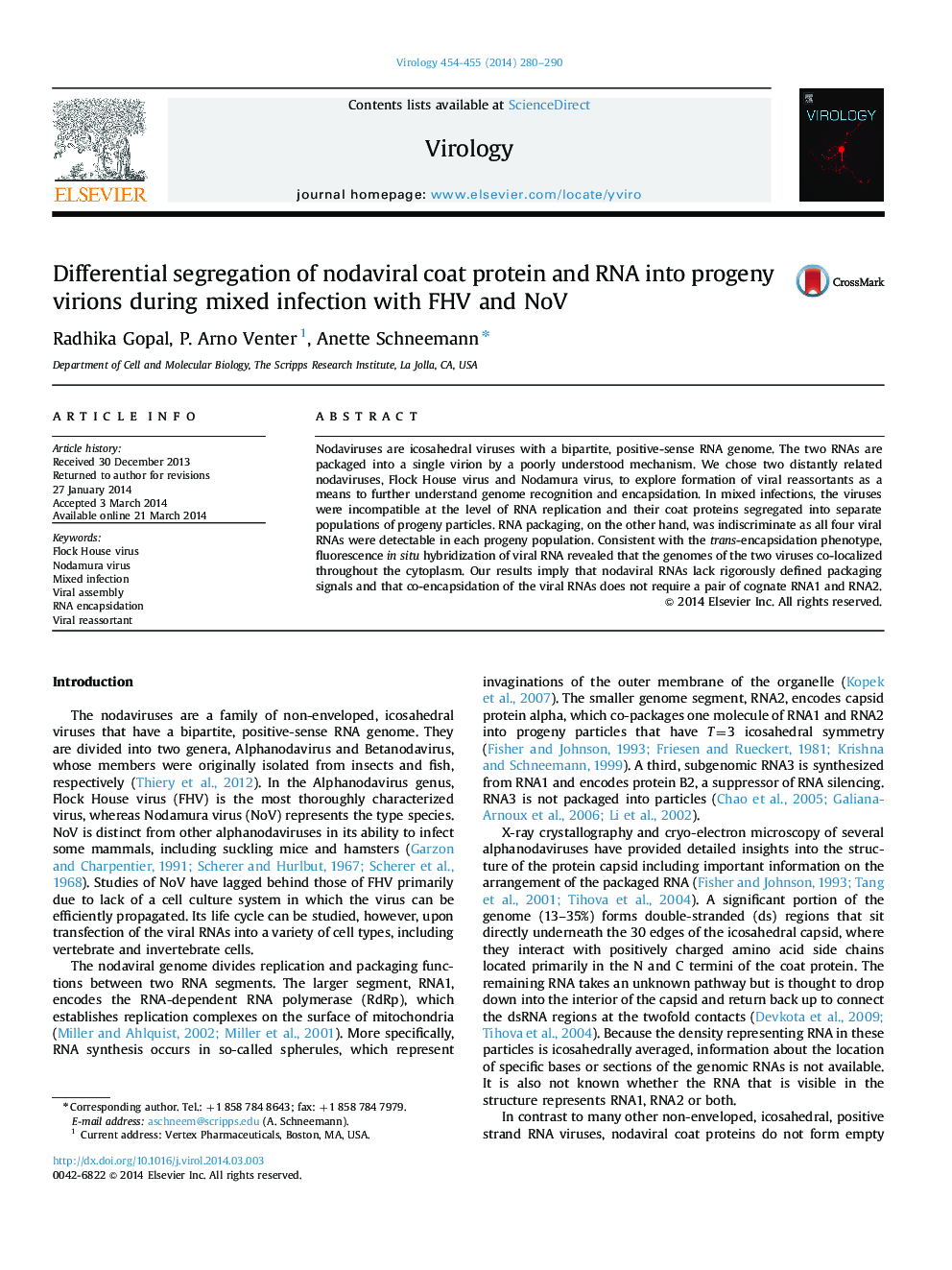| Article ID | Journal | Published Year | Pages | File Type |
|---|---|---|---|---|
| 6140459 | Virology | 2014 | 11 Pages |
Abstract
Nodaviruses are icosahedral viruses with a bipartite, positive-sense RNA genome. The two RNAs are packaged into a single virion by a poorly understood mechanism. We chose two distantly related nodaviruses, Flock House virus and Nodamura virus, to explore formation of viral reassortants as a means to further understand genome recognition and encapsidation. In mixed infections, the viruses were incompatible at the level of RNA replication and their coat proteins segregated into separate populations of progeny particles. RNA packaging, on the other hand, was indiscriminate as all four viral RNAs were detectable in each progeny population. Consistent with the trans-encapsidation phenotype, fluorescence in situ hybridization of viral RNA revealed that the genomes of the two viruses co-localized throughout the cytoplasm. Our results imply that nodaviral RNAs lack rigorously defined packaging signals and that co-encapsidation of the viral RNAs does not require a pair of cognate RNA1 and RNA2.
Related Topics
Life Sciences
Immunology and Microbiology
Virology
Authors
Radhika Gopal, P. Arno Venter, Anette Schneemann,
